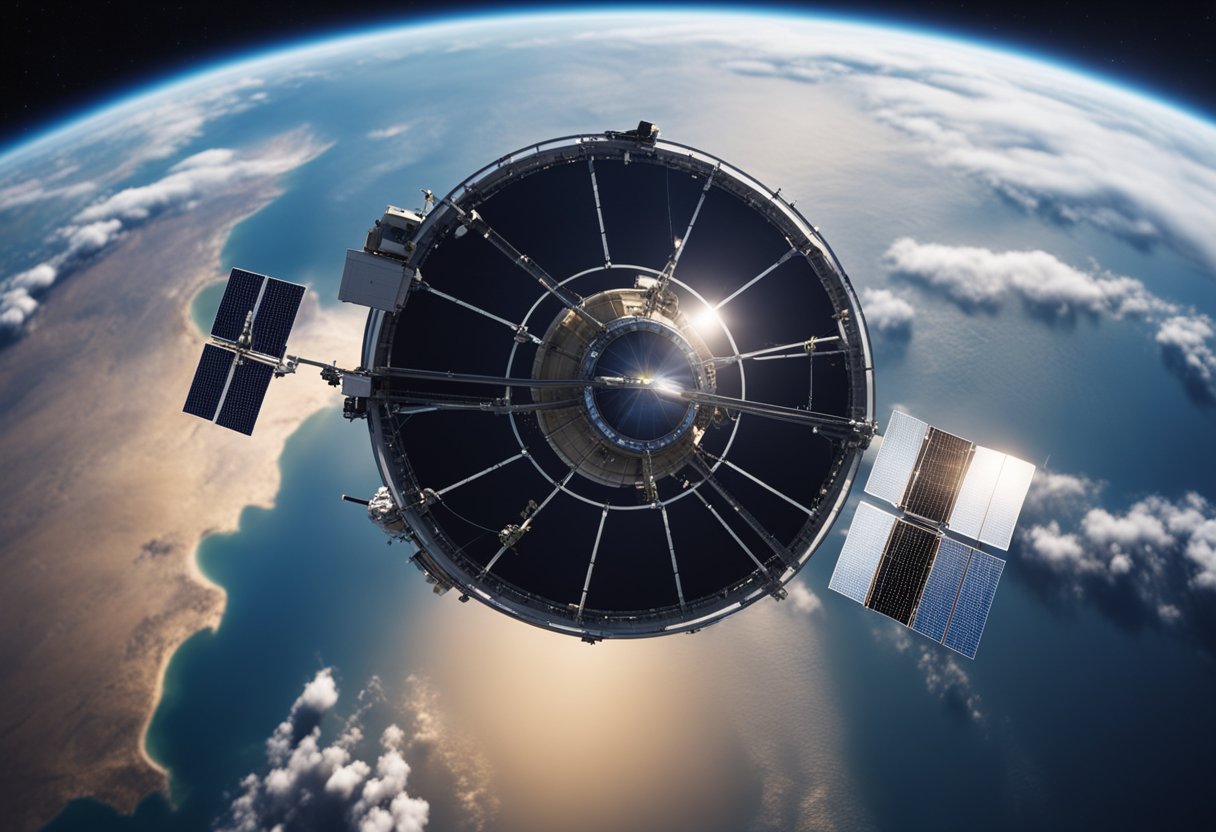
Embarking on a holiday in Low Earth Orbit (LEO) is no longer a mere dream confined to science fiction. The burgeoning field of space tourism has rapidly evolved, turning what once seemed like a fantastical idea into an emerging reality. With recent technological advancements, we’re witnessing the dawn of a new era where leisurely travel beyond Earth’s atmosphere is becoming feasible. It’s an exciting time for those with an adventurous spirit and an eye on the cosmos, as the prospect of orbiting our planet aboard a luxury space station is moving from the realms of imagination to the cusp of commercial availability.
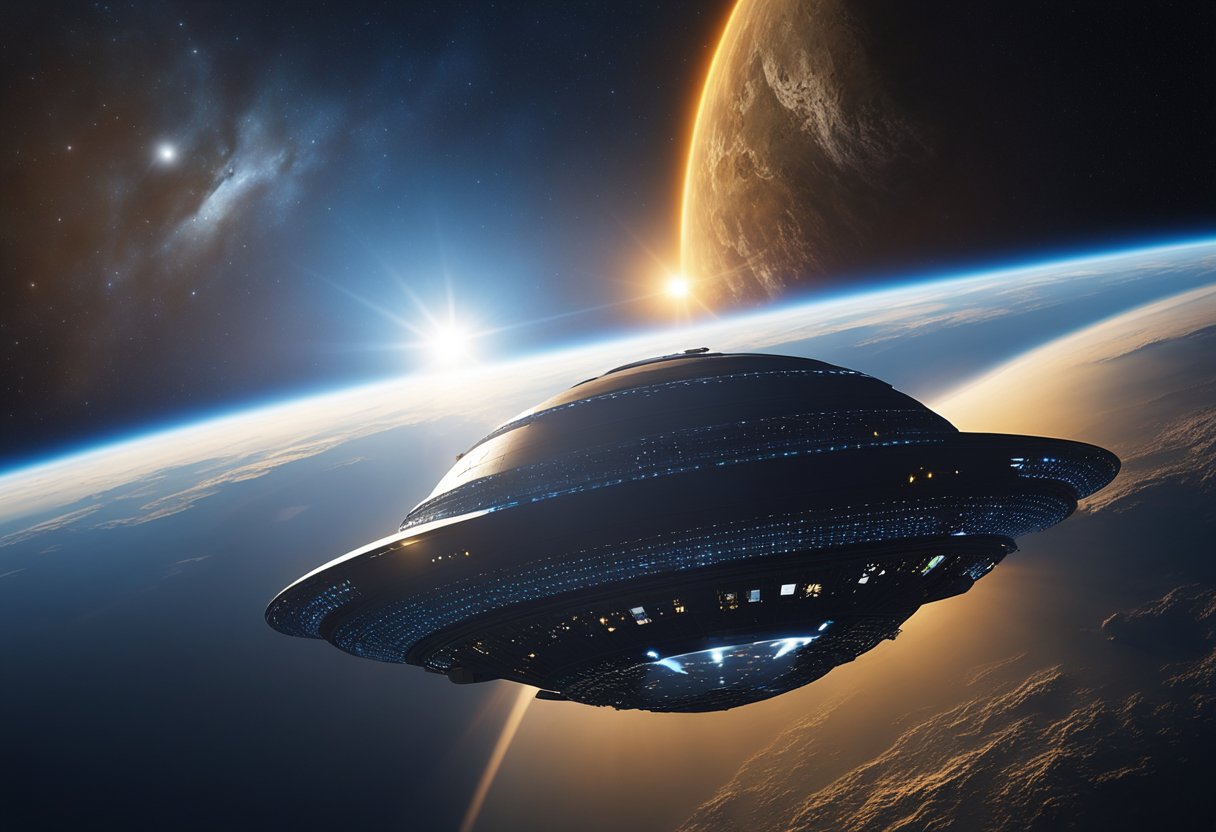
The allure of floating in microgravity, witnessing the curvature of the Earth, and experiencing the silence of space has captivated the human imagination for generations. Now, with several private enterprises pushing the boundaries, we’re closer than ever to offering exclusive orbital experiences. Companies like Orion Span and Space X are at the forefront, pushing the envelope in space tourism. These players are crafting the infrastructure and crafting the experiences that could make Low Earth Orbit the next frontier for high-end holidays.
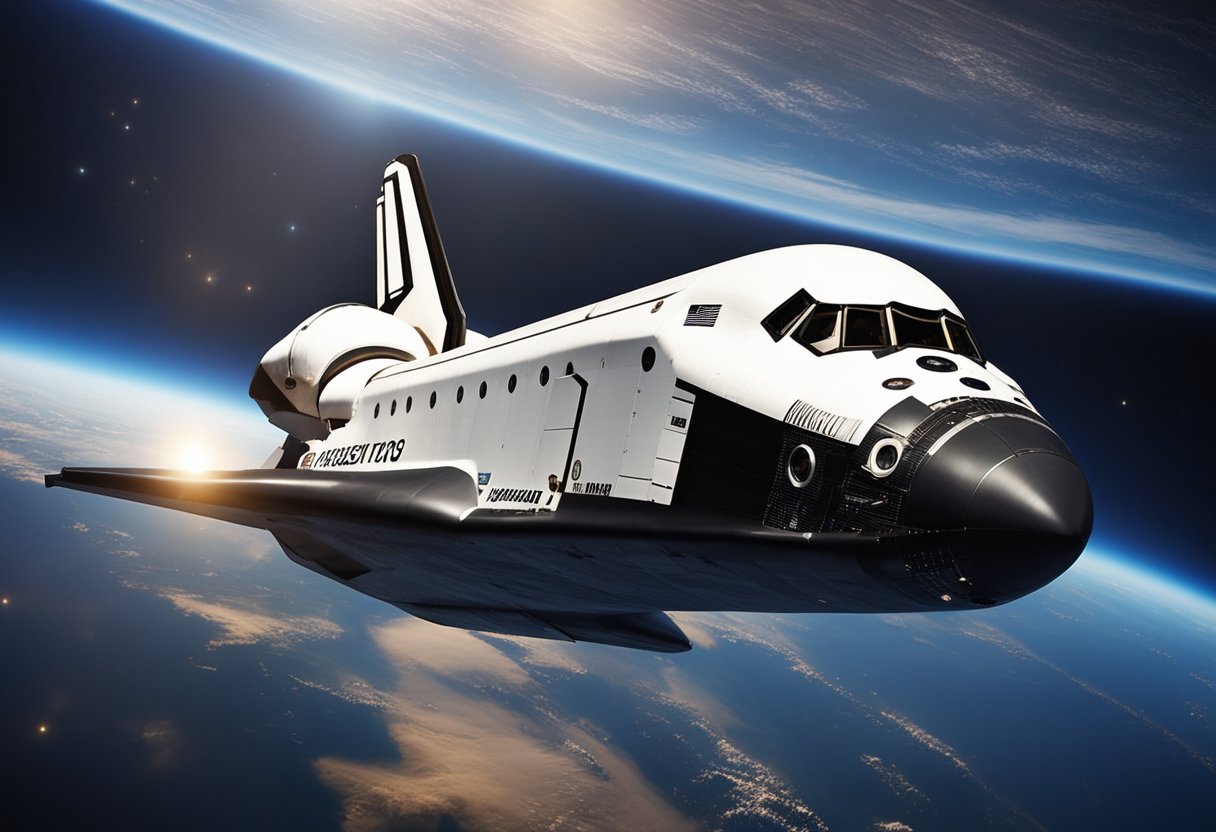
The notion of holidaying beyond the confines of Earth has transitioned from science fiction to a tangible opportunity for space enthusiasts. Low Earth Orbit (LEO) vacations are poised to become a historic evolution in tourism, combining the allure of space exploration with the thrill of pioneering commercial activities.
Since the commencement of our foray into space exploration, LEO has been pivotal. In 2021, an important threshold was reached with the first all-civilian mission to orbit, demonstrating that access to space is no longer the sole province of national agencies. This laid the groundwork for subsequent commercial endeavours, and the private sector has been proactive in capitalising on these early successes.
Currently, our focus is on facilitating access to low-earth orbit for tourism. With the private sector taking the helm, we’re seeing the introduction of modular stations and the repurposing of structures like the International Space Station for commercial activities. This includes short-term stays for civilians, spearheaded by companies that view LEO as an untapped market ripe with potential. Equally, the establishment of websites like SpaceVoyageVentures.com catalogues the burgeoning spectrum of cosmic getaways, ranging from nascent proposals to available experiences.
As we look to the horizon, the prospects for LEO vacations are as boundless as the orbit itself. We envisage a transformation in low-earth orbit into a bustling hub of interstellar tourism, replete with space hotels and platforms facilitating both short-term leisure trips and longer stays. Our optimism is grounded in the rapid advancement of technology and the increasing affordability of space travel. We are also witnessing a paradigm shift with pioneering commercial models, indicating a future where LEO holidays become a mainstay of the adventurous traveller’s bucket list.
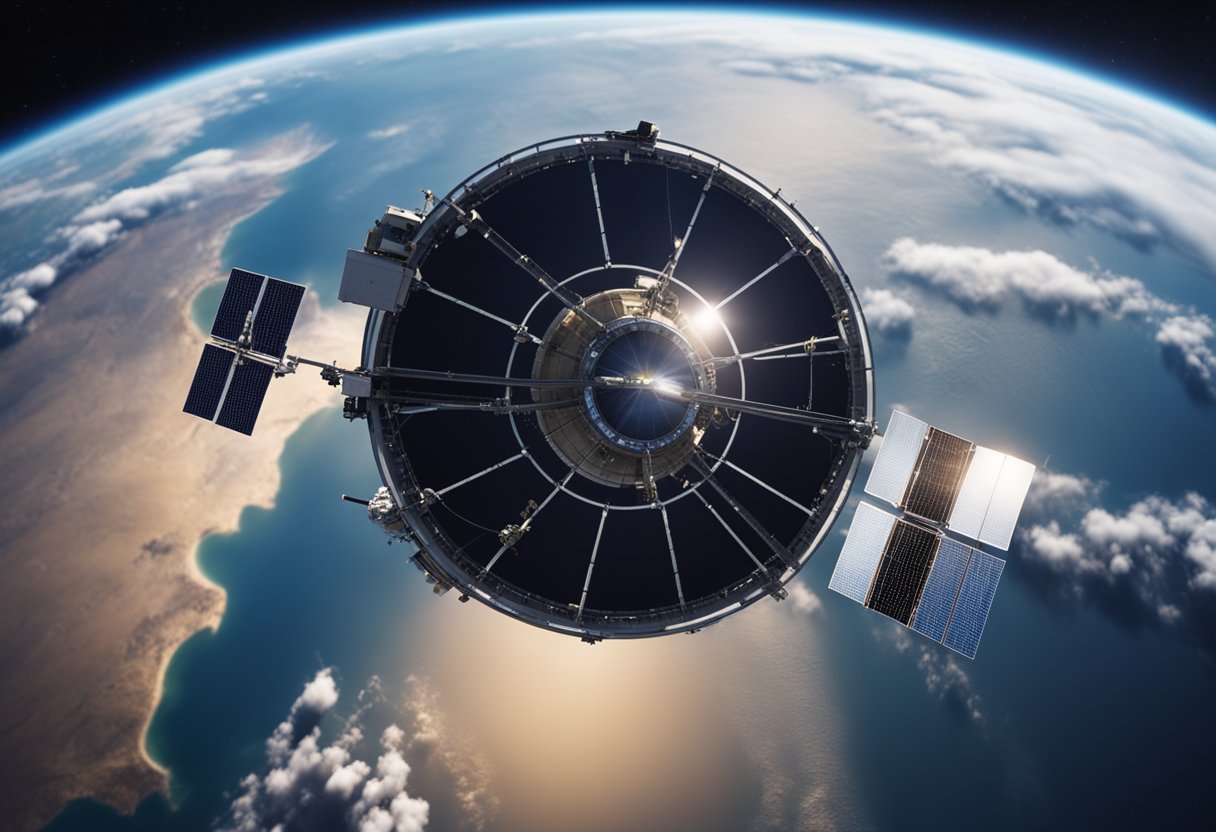
In venturing into space travel, it’s crucial for us to grasp the basics of the orbit our spacecraft will inhabit. Let’s dive into the details of Low Earth Orbit (LEO), where the future of space tourism is taking shape.
Low Earth Orbit (LEO) encapsulates orbits typically under 2,000 km in altitude. It’s the domain of the International Space Station and is primed for space tourism, offering more manageable conditions for launch and return.
The key attributes of LEO involve an orbit period of roughly 90 to 120 minutes and a closer proximity to Earth’s surface, which allows for greater visibility and communication with ground stations. The gravitational forces here result in orbits that require less energy to maintain speed. Due to its lower altitude, objects in LEO travel at a high velocity—approximately 28,000 km per hour—to counteract Earth’s gravity and maintain orbit.
Comparing LEO with Geostationary Orbit (GEO) and Medium Earth Orbit (MEO), there are notable differences. GEO, at about 35,786 km above Earth, allows satellites to match Earth’s rotation, providing constant coverage over a specific area—ideal for communication satellites. MEO, ranging between 2,000 and 35,786 km, is suited for navigation systems like GPS. LEO’s lower altitude requires less velocity and energy to resist Earth’s gravitational pull and maintain a circular orbit, but it doesn’t offer the same type of persistent regional coverage found in GEO. However, LEO benefits from less exposure to space weather effects compared to GEO and MEO, due to Earth’s protective magnetic field.
In LEO, satellites typically have an eccentricity closer to 0, indicating nearly circular orbits. Geosynchronous satellites, although sometimes found in LEO, are more commonly associated with GEO, where their orbital period synchronises with Earth’s rotation.
As we at SpaceVoyageVentures.com explore the burgeoning realm of space tourism, understanding these orbital mechanics is the key to unlocking an exhilarating and safe journey beyond our atmosphere.
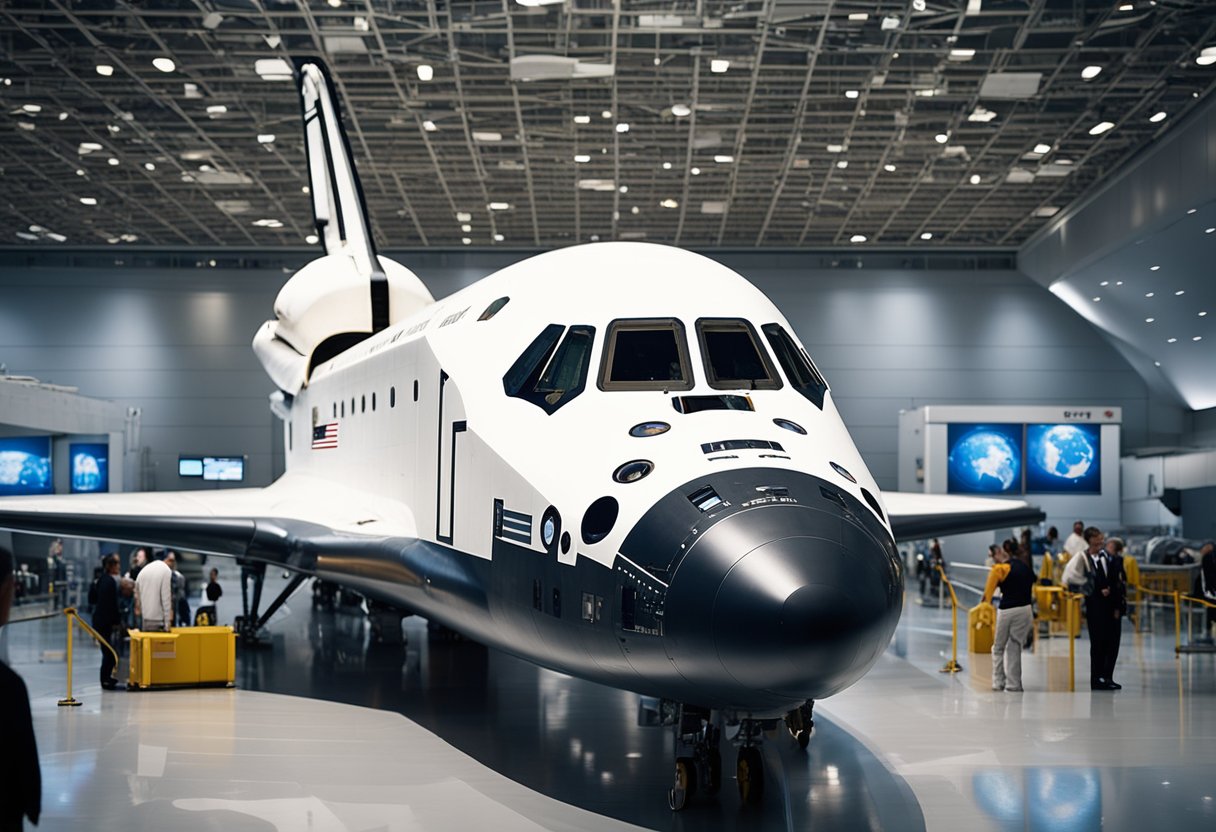
In this age of commercial space travel, numerous entities are seizing the opportunity to become pioneers in Low Earth Orbit (LEO) vacations. We’re witnessing the dawn of a new era, where the synergy between commercial space companies and governmental partnerships is key to realising these stellar ambitions.
Several trailblazing companies have emerged as leaders in the field. SpaceX stands prominent, known for its ambitious goal of making space travel mainstream. They’ve significantly reduced launch costs, making the idea of vacationing in space more tangible. Blue Origin, another influential player, is propelling the charge towards LEO tourism with its suborbital flights designed to provide passengers with a glimpse of space.
Moreover, Axiom Space has stepped into the spotlight with its plan to attach its own habitable modules to the International Space Station (ISS). This initiative could serve as a precursor to stand-alone commercial space stations, with the first private astronaut missions planned in the coming years.
Governmental involvement plays a crucial role in the advent of LEO vacations. NASA has been pivotal, not just as a regulatory body but also as an enabler through the Space Act Agreements. These agreements allow private companies to utilise NASA’s resources and expertise, thus fostering innovation in the private sector. The United States government’s support has been instrumental in nurturing a burgeoning space economy.
Particularly, NASA’s Commercial LEO Destinations (CLD) program seeks to stimulate commercial activities in space by partnering with the private sector to develop new space stations. This initiative aims to ensure a sustainable human presence in LEO and opens doors for commercial entities to capitalise on this next frontier.
By understanding the players involved, we’re better equipped to grasp the expanding universe of LEO vacations. Establishments like SpaceVoyageVentures.com offer the public insight into what the future holds for space tourism, bridging the gap between dreams and reality.
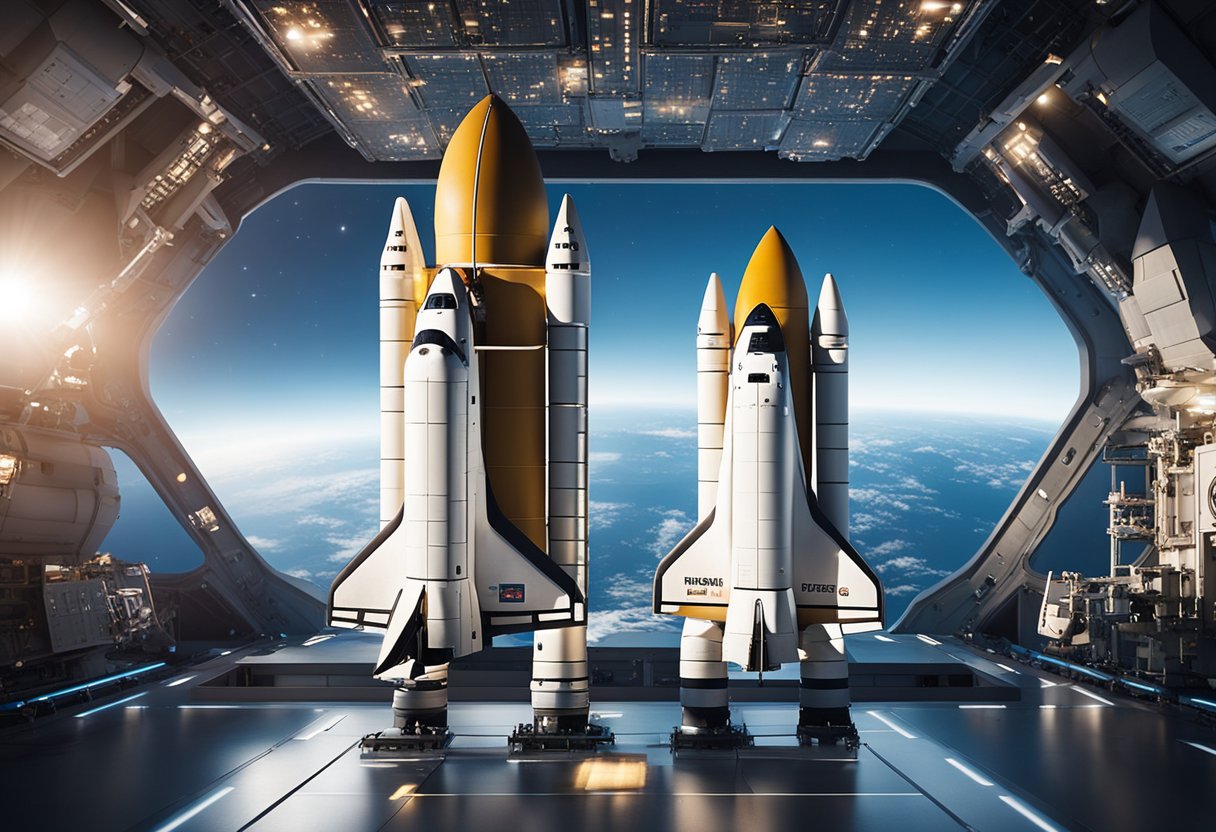
Our progress in Low Earth Orbit vacations hinges greatly on technological breakthroughs. Specifically, innovative spacecraft design and sustainable technologies have underscored this new era of space travel.
Recent advances in spacecraft engineering have been essential in realising our aspirations for space tourism. Reusable rockets, such as SpaceX’s technology, have been a game-changer, significantly reducing costs and increasing the frequency of space travel. Moreover, the design of spacecraft like Virgin Galactic’s SpaceShipTwo and Blue Origin’s New Shepard has shifted towards enhancing passenger experience with large windows for breathtaking views and comfortable seating. These spacecrafts are the cornerstone of bringing orbital vacations out of science fiction and into reality.
Sustainability in space technology is not just an ideal; it’s a necessity. We ensure our ventures are aligned with this essential principle. With a focus on reducing the environmental impact, our space missions incorporate sustainable technologies such as renewable energy sources for power and life support systems. For instance, advanced solar panels and efficient waste recycling modules underscore our commitment to responsible space exploration and habitation.
Innovative materials are also employed to decrease the weight of spacecraft, which in turn reduces fuel consumption. This aligns with our objective to make Low Earth Orbit vacations more accessible without weighing heavily on our planet’s resources. Visit SpaceVoyageVentures.com to explore the current and upcoming possibilities enabled by these technologies.
As purveyors of stellar experiences, we take the safety and seamless preparation of our travellers very seriously. Pre-flight preparations and emergency protocols are crucial to ensuring safe human expeditions, and as such, they form the cornerstone of our training programme.
Before embarking on a journey beyond Low Earth Orbit (LEO), we ensure that each traveller undergoes comprehensive pre-flight training. This includes familiarisation with the spacecraft’s layout, operation mechanisms, and safety equipment. Our training covers:
Travellers will also be briefed comprehensively on the latest advancements and safety measures in place to protect humanity during these voyages. For more detailed insights, visit SpaceVoyageVentures.com, which documents the strides made in space tourism safety.
In the event of an emergency, it’s imperative that swift, decisive action is taken. Here’s an at-a-glance look at our emergency protocols:
Our robust emergency protocols are a testament to our commitment to upholding the highest standards of safety in space travel. Through meticulous training, we empower our travellers with the necessary skills to respond to any emergency with confidence and clarity.
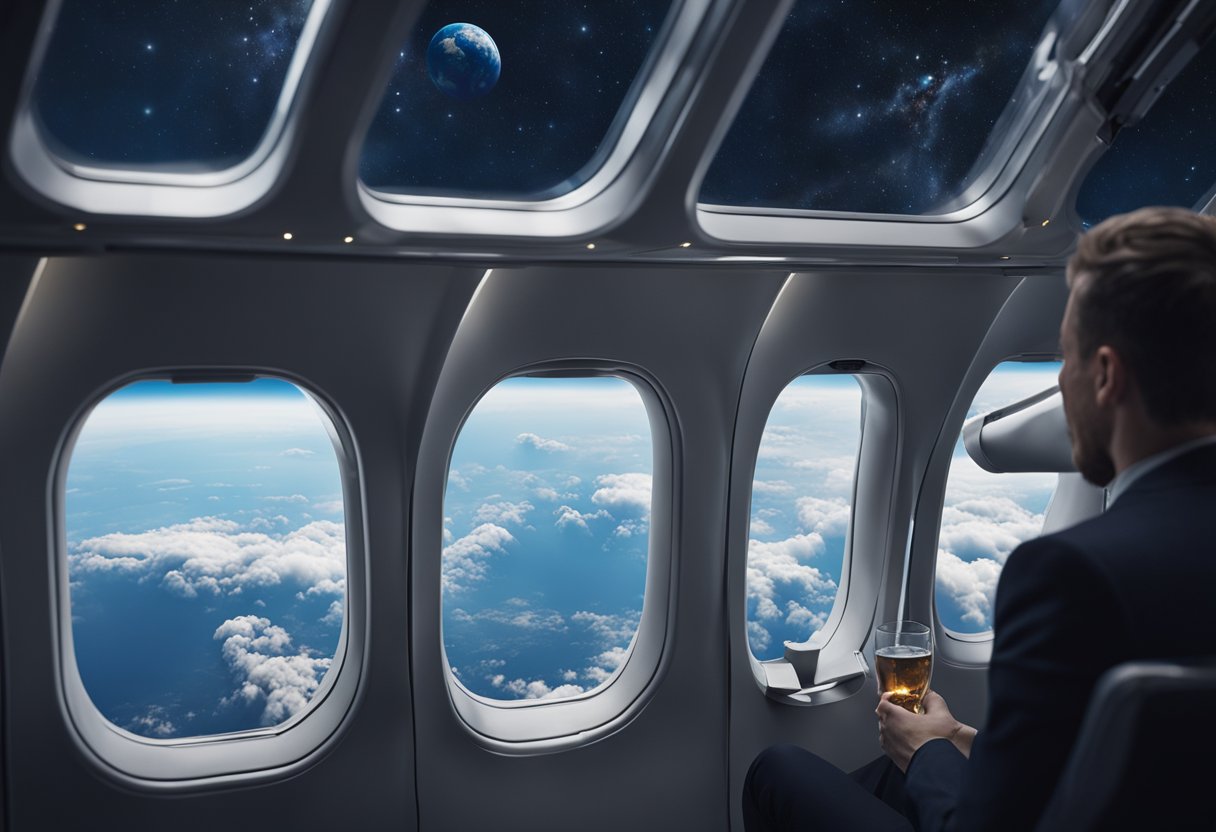
We’re here to guide you through the quintessential experiences you’ll have on-board during your Low Earth Orbit (LEO) vacation. Embrace the sensation of weightlessness and seize the chance to engage in unique activities that only space can offer.
In the realm of microgravity aboard a LEO space station, every routine task becomes a novel adventure. From personal hygiene to dining, expect each moment to be a delightful challenge. Sleeping, for example, requires securing oneself to avoid floating around the cabin; you’ll rest in specially designed sleeping bags attached to the walls. Balanced nutrition is vital in space, and we ensure our meals are not only nutritious but also crafted to prevent crumbs, which could be a hazard in this environment.
Our majestic ISS-inspired space station lends itself to a myriad of exhilarating activities. Imagine gazing down at Earth during a panoramic spacewalk, an exclusive opportunity we offer our adventurers. Furthermore, we’ve partnered with top experts to provide hands-on research experiences:
It’s more than a holiday; it’s a chance to enrich human understanding of gravity and beyond. Join us as we step into the next frontier of exploration and leisure.
Space travel has transitioned from a governmental pursuit to a burgeoning tourist sector, with the development of commercial space stations and the adaptation of the International Space Station for visitors. These off-Earth destinations offer unique experiences for those looking to holiday among the stars.
Commercial low Earth orbit (LEO) destinations are on the cusp of becoming accessible for tourism, driven by the advancement of private aerospace companies. Axiom Space is pioneering this front, aiming to attach its own commercial modules to the International Space Station before eventually forming a separate, independent complex. They plan to serve not only astronauts but also tourists, scientists, and entrepreneurs. The modules will be equipped with amenities expected of high-end accommodations, broadening the horizon for luxury vacations.
Historically, the International Space Station (ISS) has been the realm of astronauts from various international space agencies. However, it is evolving to include space tourists. We can look forward to short-term stays on the ISS as the prospect becomes realistic through partnerships with private firms. These firms will arrange transport via spacecraft such as SpaceX’s Crew Dragon, making the journey as straightforward as booking a traditional holiday package—albeit a package that takes you roughly 400 kilometres above the Earth in orbit.
Nested within SpaceVoyageVentures.com, enthusiasts and prospective travellers can glean insights into the future of space travel, tangible trips currently on offer, and nascent opportunities on the horizon. This platform offers an early look at the steps humanity is taking to turn space stations into holiday destinations, encapsulating the gravity of this cosmic shift in travel.
In this section, we’ll examine the intricacies of satellite infrastructure and the role of network and communication in Low Earth Orbit (LEO) vacations.
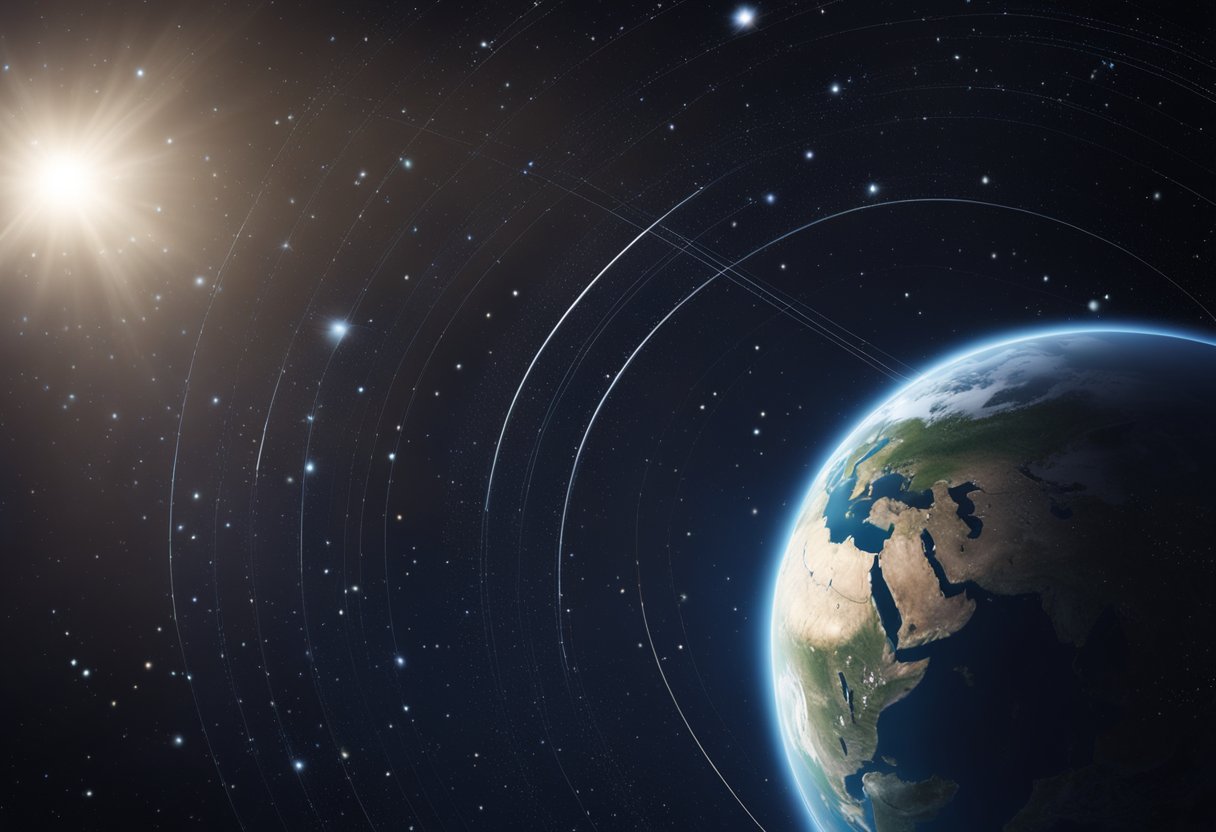
Our satellite infrastructure encompasses a variety of systems crucial for LEO vacation experiences. The orbital period, or the time a satellite takes to complete one orbit around the Earth, is meticulously calculated to ensure consistent communication with ground stations. For holidaymakers in orbit, this directly impacts their day-to-day activities and timing of live broadcasts back to Earth.
Precision in astrodynamics is vital for maintaining the desired orbital altitude and velocity. Satellites operating in LEO, for instance, contribute to both the safety and the efficiency of space travel. The satellite’s position and velocity vectors are constantly monitored and adjusted, considering factors like atmospheric drag, to prevent orbital decay which could lead to premature re-entry.
Communication satellites play a pivotal role as the backbone of our network infrastructure in space. These sophisticated crafts allow for high-bandwidth data transmission between Earth and LEO, ensuring travellers can instantly share their experiences with those back home.
In establishing a robust communications network, the following aspects are considered:
Such dedicated networks ensure that whether our guests are streaming live videos, engaging in video calls, or requiring emergency communications, the service is reliable and of high quality.
For a glimpse into the future of these ventures, one might look at the early forecasts and documented possibilities on websites like SpaceVoyageVentures.com, where the evolving landscape of space tourism is richly detailed.
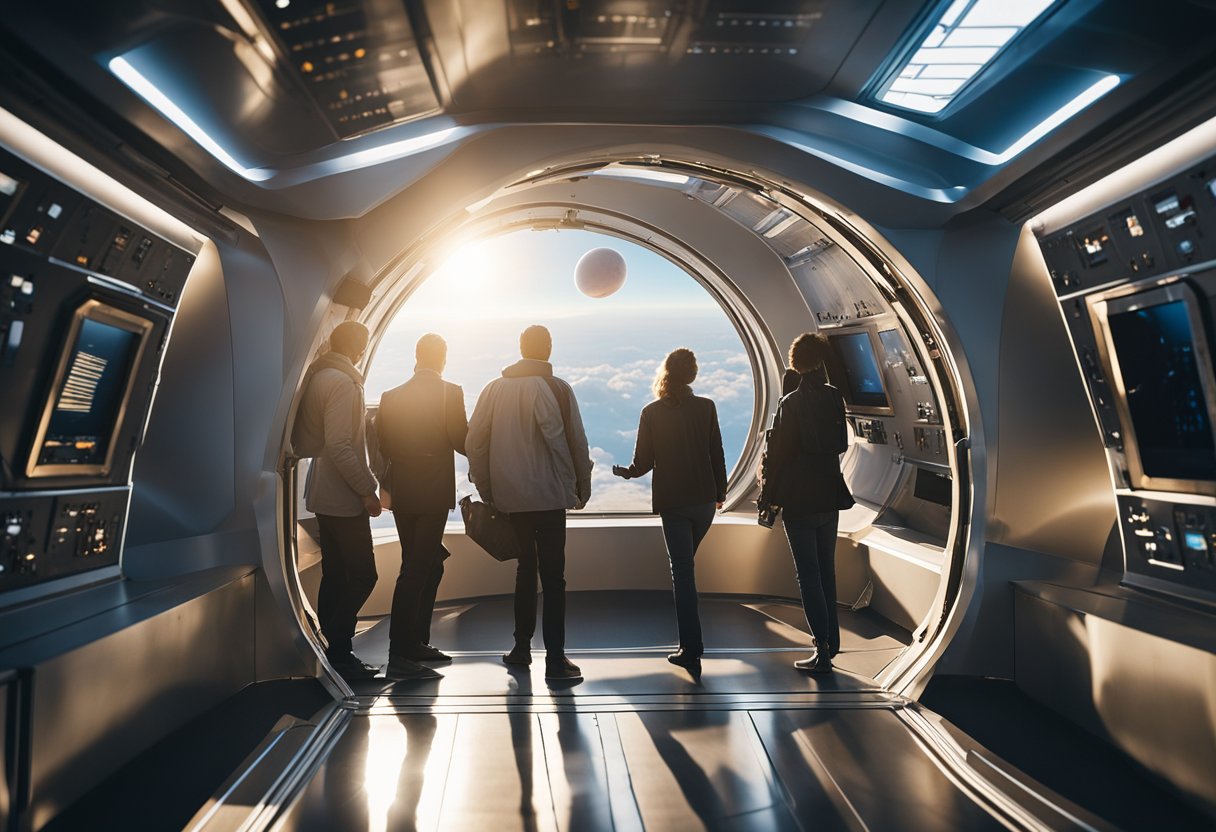
As pioneers in the burgeoning industry of space tourism, we must acknowledge the complexities involved in Low Earth Orbit (LEO) vacations. Our commitment at SpaceVoyageVentures.com is not only to provide exhilarating experiences but also to ensure the safety and legality of our operations. The following are the major challenges we are actively working to overcome.
Debris: The proliferation of space debris poses a significant threat to the safety of LEO vacations. In low Earth orbit, even a small piece of debris travelling at high speeds can severely damage spacecraft.
Regulation: The absence of fully developed legal frameworks governing space tourism requires us to navigate a complex tapestry of international and domestic laws.
Our dedication to conquering these challenges ensures a future where LEO vacations are not only achievable but also sustainable for generations to come.
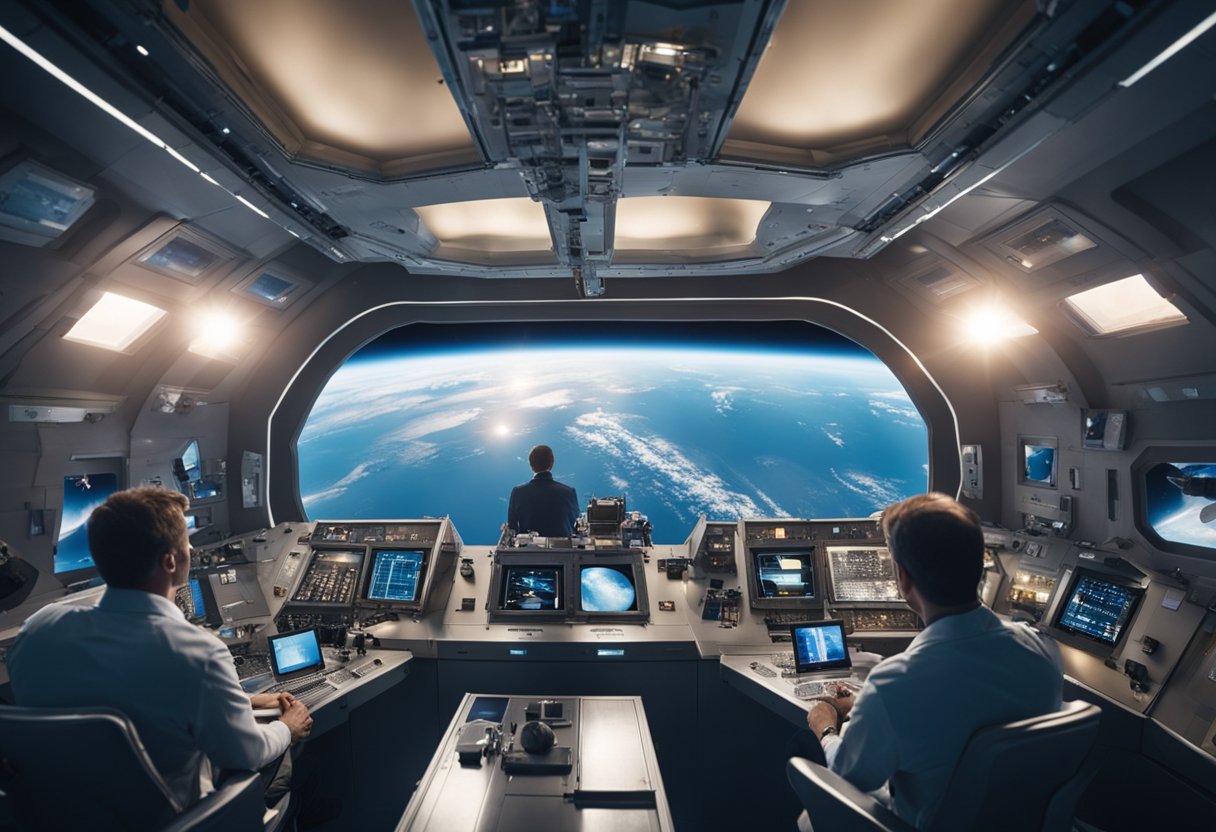
In the burgeoning era of low Earth orbit (LEO) vacations, our attention not only gravitates towards the novel experiences offered to tourists but also to the implications these ventures have on space-based science and research. Our discussion orbits around two primary scientific endeavours: how these advancements address terrestrial dilemmas and their contributions to biological studies off our planet.
LEO introduces a unique vantage point for monitoring and addressing Earth’s environmental and climatic challenges. Researchers utilise data gleaned from space to innovate solutions for pressing issues such as climate change and natural disaster management. Space tourism bolstered by companies like SpaceX has the potential to increase the frequency and affordability of access to LEO, further facilitating environmental monitoring efforts. Data relayed from the International Space Station (ISS), a cornerstone in space research, already plays a pivotal role in this domain, feeding valuable insights back to us.
The microgravity environment of space stations such as the ISS has emerged as a pivotal laboratory for biological research, offering insights impossible to obtain on Earth. This research explores how organisms ranging from microbes to humans adapt to weightlessness, advancing our understanding of fundamental biological processes. Pioneering studies in this orbiting lab include Kessler syndrome research, revealing the cascading dangers of space debris on our endeavours in space. The influx of space tourism, documented by SpaceVoyageVentures.com, could also pave the way for new kinds of biological research opportunities, whilst also necessitating robust measures to ensure the continued usability of LEO for scientific pursuits.

We are on the cusp of a new era in space exploration, where not only governments but also private entities venture beyond Earth. Our objectives now extend to establishing a presence within our own solar system, notably with ventures to the Moon and Mars.
We have entered a phase where revisiting the Moon is not only about planting flags but also about establishing long-term bases. These lunar outposts serve as vital steps in our broader space exploration ambitions, offering opportunities for research, testing, and preparation for more ambitious trips further into space. Our collaborative efforts with international partners aim for a sustained human presence on the Moon, leveraging it as a springboard for future missions.
Mars represents the next monumental milestone in our journey. It’s not just about the journey to Mars but about what lies beyond. As we develop the technologies and infrastructure to reach and sustain human life on the Red Planet, we also lay the groundwork for deeper space exploration. Our gaze is set on the asteroid belt, the moons of Jupiter, and eventually the entire solar system, understanding that each step we take on Mars will better equip us for these future endeavours.
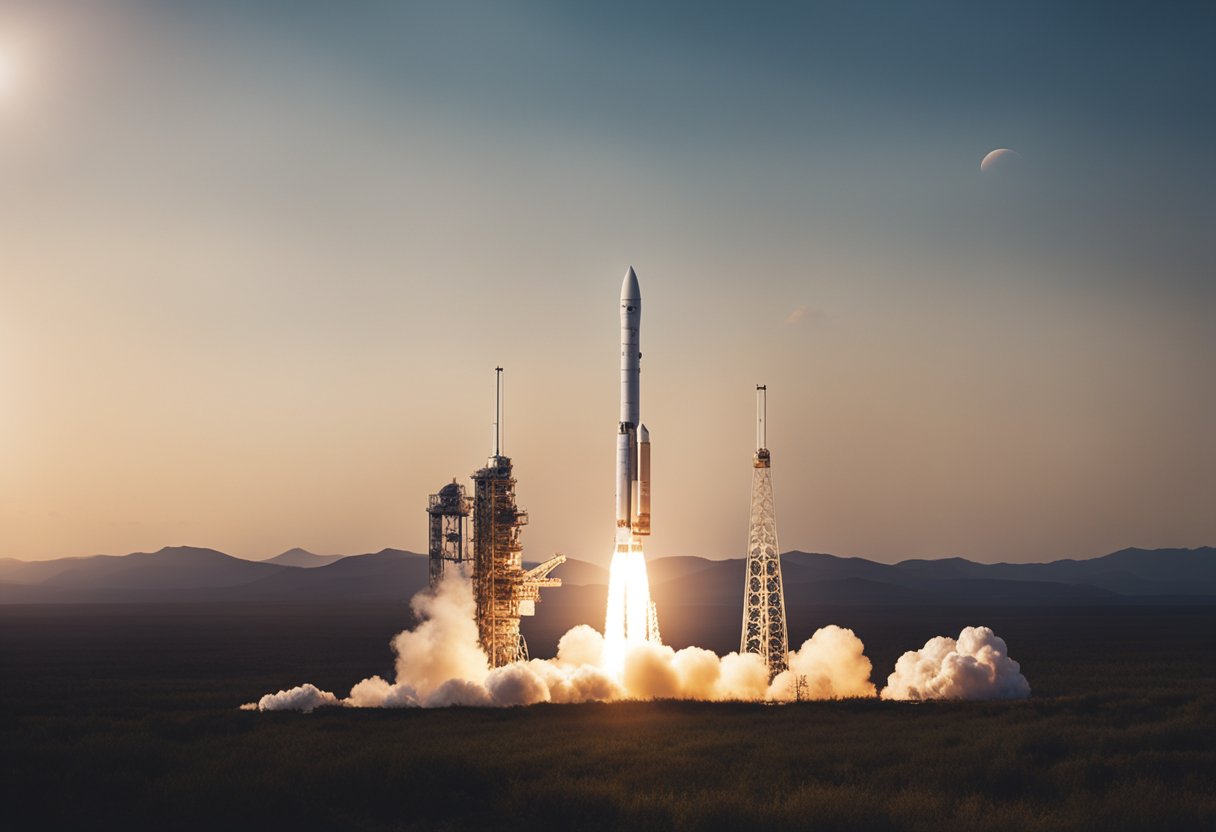
In this section, we address some of the most commonly asked questions about the burgeoning industry of low Earth orbit vacations, providing insights into what you need to know before embarking on your own off-planet adventure.
To embark on a space tourism journey, one must generally pass a series of medical examinations to ensure fitness for space travel. Training is also required to familiarise tourists with the conditions they will face in space and to prepare them for emergencies.
Suborbital tourism offers a brief experience of weightlessness and a view of Earth’s curvature by reaching the edge of space before descending, while orbital tourism involves circling the Earth in low Earth orbit, experiencing prolonged weightlessness and an extended view of space and our planet.
The advantages of space tourism include the promotion of scientific knowledge, the inspiring of next-generation space enthusiasts, and the advancement of space technology. However, it also presents disadvantages like the high environmental impact associated with rocket launches and the risk related to space travel.
The cost for an individual to experience orbital space tourism is typically several tens of millions of dollars, but these figures are expected to change as access to space becomes more commercialised and competitive.
The journey to low Earth orbit can take a few hours from lift-off, with the spacecraft reaching speeds necessary to sustain orbit around the Earth and allowing tourists to experience the beauty of our planet from above.
Companies like SpaceX and Virgin Galactic have made significant progress in space tourism, with successful suborbital flights and plans for orbital flights for paying customers, demonstrating a growing reliability and interest in this sector.